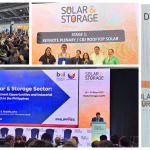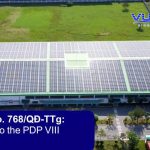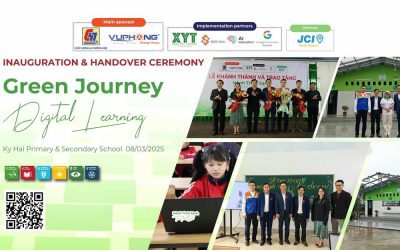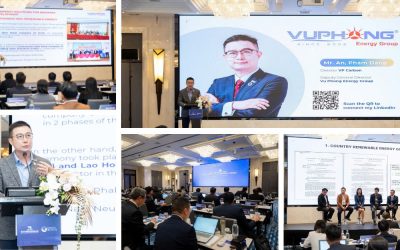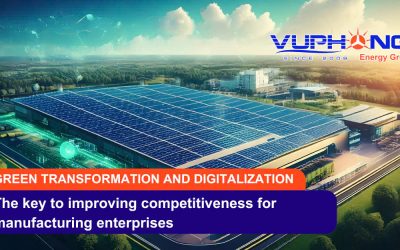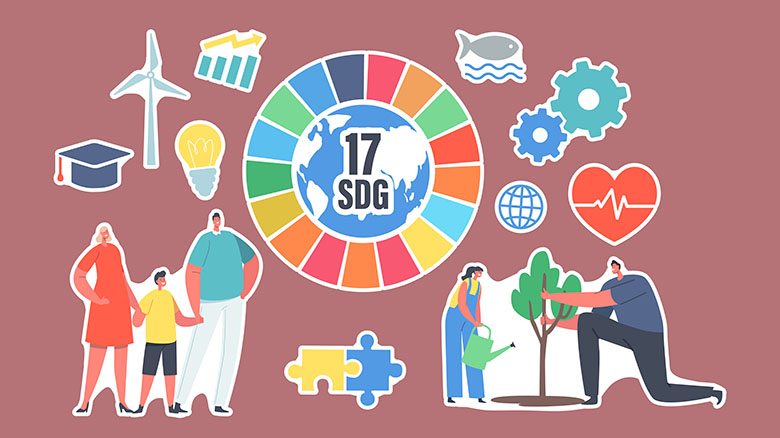
In September 2015, the United Nations General Assembly adopted the 2030 Agenda, which comprises 17 sustainable development goals aimed at eradicating poverty, protecting the planet, and promoting prosperity for all. Vu Phong Energy Group invites you to learn more about the context, detailed content of the goals, and Vietnam’s achievements in implementing them.
The History of Sustainable Development
The first United Nations conference to focus on international environmental issues was the United Nations Conference on the Environment and People (Stockholm Conference) held in Stockholm, Sweden, in 1972. The World Commission on Environment and Development (WCED), also known as the Brundtland Commission, was established in December 1983 to promote sustainable development.
Agenda 21 and the Millennium Development Goals
Agenda 21 was agreed upon in 1992 as a shared framework for designing action plans to achieve sustainable development in the twenty-first century at the World Summit on Environment and Development (The Earth Summit in Rio de Janeiro) with the participation of 179 countries.
The Millennium Summit in September 2000 endorsed the Millennium Declaration, which included eight Millennium Development Goals. The social and environmental goals reflected in the Millennium Development Goals and Agenda 21 were discussed, augmented, and perfected at the World Summit on Sustainable Development in Johannesburg (South Africa) in 2002.
The United Nations Post-2015 Development Agenda
The United Nations High-level Conference on Sustainable Development (Rio+20) was held in June 2012, with discussions focusing on enhancing the institutional framework for sustainable development and the green economy, new sustainable development goals, and indicators.
Since September 2013, countries have launched the process of developing the United Nations Post-2015 Development Agenda and a set of 17 sustainable development goals. The 2030 Agenda, which includes 17 sustainable development goals, was officially approved on September 25, 2015, during a United Nations Summit attended by 193 member countries. The 2030 Agenda includes universal, broad, and comprehensive policy coverage to finish the unfinished business of the Millennium Development Goals and Agenda 21 to leave no one behind.
The Sustainable Development Goals
The 17 Sustainable Development Goals (SDGs) adopted by the United Nations in 2015 are defined by 169 specific goals and 232 targets aimed at eradicating poverty, protecting the planet, and ensuring that all people enjoy peace and prosperity by 2030.
Introduction to the 17 SDGs and their significance based on Resolution No. 136/NQ-CP of Vietnam:
|
|
Global |
Viet Nam |
| Goals 1 | No poverty | End poverty in all its forms everywhere |
| Goals 2 | Zero hunger | The second objective aims to guarantee that everyone has access to sufficient, wholesome, and safe food. Additionally, it aims to eradicate all types of malnutrition, including hunger and a lack of certain micronutrients. This is accomplished by taking steps like boosting agricultural productivity, enhancing market accessibility, and safeguarding natural resources. |
| Goals 3 | Good health and well-being | Assuring everyone’s health and wellbeing is the third goal. This includes having access to clean water and sanitary facilities, as well as to health services and high-quality medical care. This is accomplished by taking steps like encouraging active lives, funding medical services, and bolstering public health systems. |
| Goals 4 | Quality education | The fourth objective aims to guarantee that all people have access to high-quality education. This covers having access to early childhood, elementary, and secondary education as well as to job training and skill advancement. Providing access to high-quality education, funding educational infrastructure, and encouraging lifelong learning are steps toward achieving this goal. |
| Goals 5 | Gender equality | The fifth goal aims to promote gender equality and all women’s and girls’ empowerment. This is accomplished by taking steps like removing discriminatory laws and practices, improving access to financial resources, and raising the involvement of women in decision-making. |
| Goals 6 | Clean water and sanitation | The sixth objective aims to guarantee that everyone has access to inexpensive, sanitary, and safe drinking water. This is done by taking measures like conserving watersheds, boosting water efficiency, and increasing access to infrastructure and services for water and sanitation. |
| Goals 7 | Affordable and clean energy | Every people should have access to affordable, dependable, and clean energy, according to the seventh goal. This is done by supporting renewable energy, making investments in energy efficiency, and facilitating greater access to energy services. |
| Goals 8 | Decent work and economic growth | The eighth goal aims to guarantee fair employment and economic progress for all. This is done by taking steps like putting people to work, raising wages and working conditions, and spending money on infrastructure and small and medium-sized businesses. |
| Goals 9 | Industry, innovation and infrastructure | The ninth objective aims to support infrastructure, business, and innovation for long-term economic growth. This is done by supporting green and inclusive industrialization, investing in research and development, and building infrastructure. |
| Goals 10 | Reduced inequalities | The eleventh goal aims to lessen inequality both inside and between nations. This is accomplished by taking steps to combat discrimination, advance equal access to opportunities and resources, and attend to the unique requirements of underprivileged groups. |
| Goals 11 | Sustainable cities and communities
|
Making cities and human settlements inclusive, safe, resilient, and sustainable is the eleventh goal. This is accomplished through undertaking initiatives like supporting the adoption of green technologies, advancing sustainable urbanization, and expanding accessibility to public transportation. |
| Goals 12 | Responsible consumption and production | Promote responsible production and consumption practices is the 12th aim. This is accomplished by taking steps to promote resource efficiency, eliminate waste, and advance sustainable production and consumption practices. |
| Goals 13 | Climate action | The twelfth objective aims to combat climate change and its effects as soon as possible. This is accomplished by taking steps like cutting emissions, encouraging resilience, and funding mitigation and adaptation strategies |
| Goals 14 | Life below water | The conservation and sustainable use of the oceans, seas, and marine resources is the fourteenth aim. This is accomplished by taking steps to encourage ethical fishing methods, save coastal habitats, and lessen pollution. |
| Goals 15 | Life on land | The protection, restoration, and promotion of the sustainable use of terrestrial ecosystems are the objectives of aim fifteen. This is done by supporting sustainable agriculture, conserving animals, and halting deforestation and desertification. |
| Goals 16 | Peace, justice and strong institutions | The sixteenth goal aims to advance inclusive and peaceful societies for long-term growth. This is accomplished through taking steps to improve the rule of law, lessen conflict and violence, and increase access to justice. |
| Goals 17 | Partnerships for the goals |
The global partnership for sustainable development is to be revitalized and its mechanisms of implementation strengthened as part of the seventeenth aim. This is accomplished by taking steps like fostering international cooperation, bolstering global alliances, and mobilizing financial resources.According to the National Sustainable Development Goals (SDGs) Report 2020, Vietnam will achieve 5 of the 17 SDGs by 2030, including Goals 1; 2; 4; 13; 17. In terms of SDG index scores, Vietnam ranks 51st out of 165 nations in 2021. |
Primary Objectives for Ending Poverty
The SDGs are interrelated, thus advancement in one area might influence advancement in another. As a result, it’s crucial to think about which objectives are most crucial for ending poverty. No Poverty (Goal 1), Zero Hunger (Goal 2), Good Health and Well-Being (Goal 3), Quality Education (Goal 4), Gender Equality (Goal 5), Decent Work and Economic Growth (Goal 8), Climate Action (Goal 13), and Responsible Consumption and Production are some of the goals that both directly and indirectly affect poverty (Goal 12).
Successes and Difficulties
Since the SDGs were adopted in 2015, some progress has been made, particularly in reducing poverty. However there are other obstacles that must be overcome if the goals are to be met by 2030. Lack of funding and resources, restricted access to information and technology, and poor infrastructure are a few of them.
The UN has underlined that cooperation is crucial for attaining the SDGs amongst governments, civil society, the commercial sector, and other stakeholders. This entails creating novel financing systems, exchanging best practices, and using technology to spur change.
SDG Success Stories
Throughout the past three years, the SDGs have experienced a lot of success. For instance, the objective of eliminating severe poverty has made headway as a result of improved access to high-quality healthcare and education, as well as improved job income. Due to improvements in infrastructure and better management of natural resources, the objective of ensuring access to clean water and sanitation has also advanced.
Moreover, progress has been made toward the objective of gender equality as a result of improved access to economic resources and opportunities as well as increased participation of women in decision-making. Lastly, because disadvantaged groups now have more access to resources and opportunities, the goal of eliminating inequities has made progress.
The Sustainable Development Goals are a group of 17 international objectives that aim to eradicate poverty, safeguard the environment, and guarantee that everyone lives in peace and prosperity. Progress in one area might influence progress in another since they are interrelated. Understanding the SDGs is crucial for eradicating poverty, and recent years have seen modest progress toward the targets. There is still a lot of work to be done, though, and all parties involved must work together. We can all help to achieve the SDGs and create a better world by accepting personal responsibility, participating in corporate social responsibility, and putting policies into place on a national and local level.
Sustainable Development Goals in Vietnam
On May 10, 2017, the Prime Minister of Vietnam released the National Action Plan to Implement the 2030 Agenda for Sustainable Development, with 17 sustainable development goals and 115 specific targets. On June 4, 2019, Decision No. 681/QD-TTG on the Roadmap for the Implementation of Vietnam’s Sustainable Development Goals to 2030 was announced. The most current resolution is the Resolution on Sustainable Development (Resolution No. 136/NQ-CP), which was released on September 25, 2020.
|
Towards sustainable development and a strong Vietnam vision 2045, Vu Phong Energy Group has been pursuing values in the direction of the United Nations Sustainable Development Goals with Goals 1-3-4-5-6-7-8-13-14-15, with a special focus on Goals 7-8-6 and 13.
|
More:

